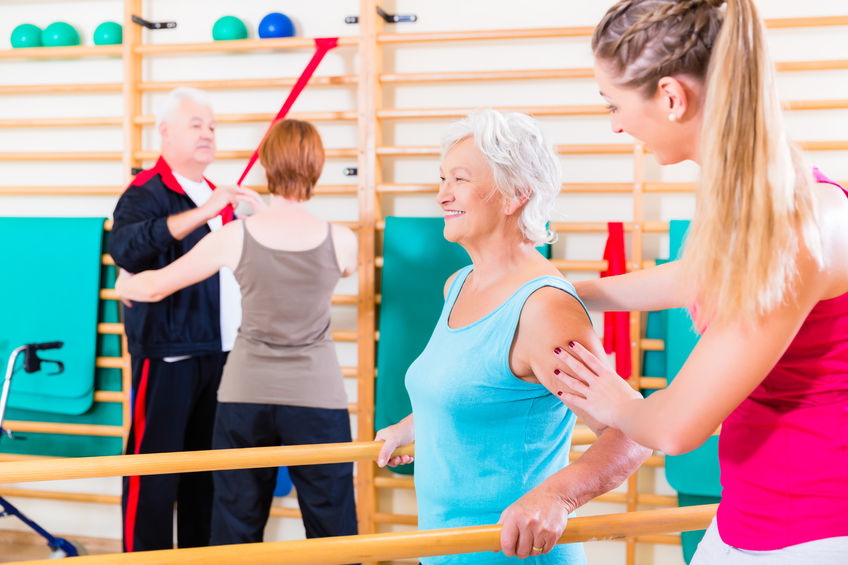What happened to rehab?
By Susan Saldibar
What are you doing to prepare your team for those residents who come bouncing right back to you after a hospital stay for a broken hip or other acute issue? Wait. Wasn’t there a step in between. What happened to rehab?
Of course we know what happened. It’s not exactly news. The Medicare model has shifted away from reimbursement based on volume and more towards reimbursement for value or outcome. This means that the rehab centers are being used more out of medical necessity versus convenience for the patient and family. That equates, in many cases, to patients released from the hospital right back to their homes or assisted living communities. For many it’s a good thing, as people do want to get back to their homes rather than to a rehab center or skilled nursing facility. But are they ready? And, perhaps a better question is are you ready for them?
I asked Shane Malecha, Clinical Practice Specialist for Aegis (a Senior Housing Forum partner), to weigh in on how Medicare changes over the last few years have altered the traditional rehab model. “Even over the last year or so, there has been a pretty dramatic shift,” says Shane. “Now we are seeing individuals, especially orthopedic patients, coming straight back to their assisted living or independent living communities from the hospital.”
It’s time to stop the hand wringing!
And, Shane tells me that, while patients he has talked with really do want to get back to their familiar environment, it does create a potential for additional burden on assisted living communities that may lack the infrastructure to support those residents who return with higher needs. What are they doing to be better prepared?
According to Shane, probably not enough. It’s time to stop the hand wringing. They need to find ways to provide a stronger rehab program whether it is through a home health agency or developing their own outpatient program. And, in some assisted living communities, they are scrambling to put a meaningful program in place.
Forget “burden”. Could this be an opportunity?
According to Shane there are two areas to focus on, front end and back end, in order for assisted living operators to provide the needed care and to build a proper business model to support it.
-
The front end: Use analytics to be better informed on the front end. Aegis uses a pretty cool tool they have developed called Market Mover. “We have used the Market Mover with skilled nursing, assisted living and ‘at home’ health. The data tells us, from the hospital, which patients are more likely going to skilled nursing and who is skipping skilled nursing and either going back home or to an assisted living community.”
-
The back end: Create a new person-centered wellness model for therapy. Shane is seeing this happening in communities that have been able to get out in front of the curve and prepare. “Communities are starting to incorporate a new ‘wellness’ therapy model that addresses the different needs of their residents.” The concept behind it is to build an environment where therapy is part of wellness activities. So, when a resident needs to go to the hospital, they are coming back to a therapy-supported environment they are familiar with. They get the level of therapy they need from individuals they already know.
I would think that this model could actually improve outcomes even more.
“The data collected from Market Mover helps them formulate programs from clinical programs; home health and outpatient setting.
The key, Shane says, is to use data to so you carve out programs that provide a seamless, therapeutic environment. “The data can help answer questions such as, ‘How can we prepare for residents who are coming back to us much more quickly? Should we partner with a rehab team? How can we ramp up our existing programs?’ These are questions that having the right information on the front end help communities on the back end,” says Shane. And, most importantly, lead to better outcomes for residents.
And there is opportunity to position your community as a resource for hospitals as well. By being able to demonstrate that your community has a well-developed physical therapy, occupational therapy and speech therapy program, hospitals may be more likely to recommend your community to a family with a loved one who can no longer live at home.
One thing is clear, however. There is a different person coming out the hospital today. This person may need a greater level of rehab and more support in the process. Senior living community operators need to know who they are and when they are coming back to them. And they should be prepared to give them the level of care they need.
So, what happened to rehab? Maybe the answer is up to you.
For more information on Aegis Therapies, please visit their website by clicking the logo button below:
Download a PDF copy of this article by clicking on the button below:









